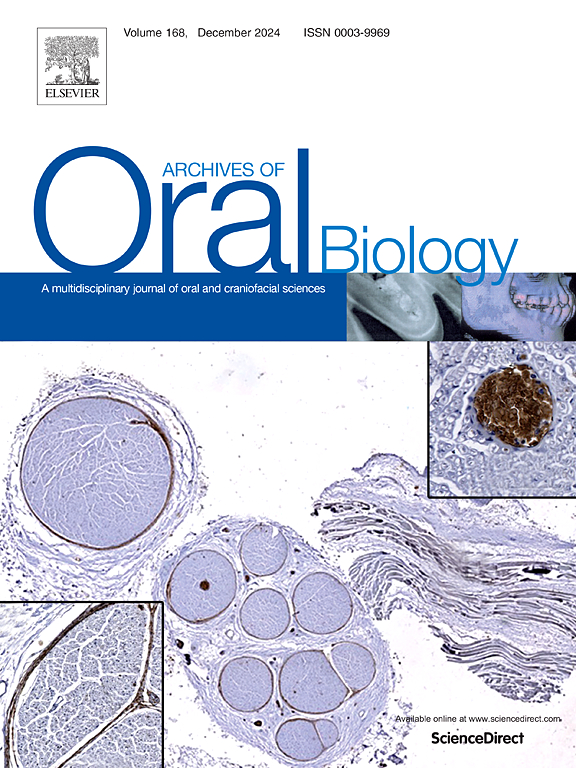Endoplasmic reticulum stress as a nexus of temporomandibular joint osteoarthritis
IF 2.1
4区 医学
Q2 DENTISTRY, ORAL SURGERY & MEDICINE
引用次数: 0
Abstract
Objective
This review aims to summarize the molecular architecture of endoplasmic reticulum (ER) stress signaling networks and their mechanistic involvement in temporomandibular joint osteoarthritis (TMJOA) progression, and current therapeutic strategies targeting ER stress mediators and the obstacles from bench to bedside.
Design
The related literatures of the roles of ER in TMJOA were searched through PubMed database by different combinations of the following keywords including animal models, ER, unfolded protein response (UPR), ER-associated degradation (ERAD), ER-phagy, TMJ, and OA. No filters were used in the search. The references of eligible studies were also analyzed and reviewed comprehensively.
Results
This review discussed how ER stress signaling orchestrated TMJOA pathogenesis, including UPR, ERAD, and ER-phagy. It was also summarized how biomechanical stress and hypoxic microenvironment synergistically exacerbated ER stress, and the current therapeutic strategies for TMJOA based on ER stress modulators and the obstacles in bench-to-bedside research.
Conclusions
ER proteostasis represented a pivotal but underexplored therapeutic axis in TMJOA. Bridging the gap between mechanistic understanding of ER stress adaptation and TMJ-specific pathobiology is essential for developing novel therapeutic strategies for TMJOA.
内质网应激与颞下颌关节骨性关节炎的关系。
目的:综述内质网(ER)应激信号网络的分子结构及其在颞下颌关节骨性关节炎(TMJOA)进展中的机制,以及目前针对内质网应激介质的治疗策略和从实验台到床边的障碍。设计:通过动物模型、ER、未折叠蛋白反应(UPR)、ER相关降解(ERAD)、ER吞噬、TMJ、OA等关键词的不同组合,在PubMed数据库中检索ER在TMJOA中作用的相关文献。搜索中没有使用过滤器。并对符合条件的文献进行了综合分析和综述。结果:本文讨论了内质网应激信号如何调控TMJOA的发病机制,包括UPR、ERAD和ER吞噬。总结了生物力学应激和缺氧微环境如何协同加剧内质网应激,以及目前基于内质网应激调节剂的TMJOA治疗策略和从实验台到临床研究的障碍。结论:内质网蛋白酶抑制是TMJOA的关键治疗轴,但尚未得到充分研究。弥合内质网应激适应机制与tmj特异性病理生物学之间的差距对于开发新的TMJOA治疗策略至关重要。
本文章由计算机程序翻译,如有差异,请以英文原文为准。
求助全文
约1分钟内获得全文
求助全文
来源期刊

Archives of oral biology
医学-牙科与口腔外科
CiteScore
5.10
自引率
3.30%
发文量
177
审稿时长
26 days
期刊介绍:
Archives of Oral Biology is an international journal which aims to publish papers of the highest scientific quality in the oral and craniofacial sciences. The journal is particularly interested in research which advances knowledge in the mechanisms of craniofacial development and disease, including:
Cell and molecular biology
Molecular genetics
Immunology
Pathogenesis
Cellular microbiology
Embryology
Syndromology
Forensic dentistry
 求助内容:
求助内容: 应助结果提醒方式:
应助结果提醒方式:


